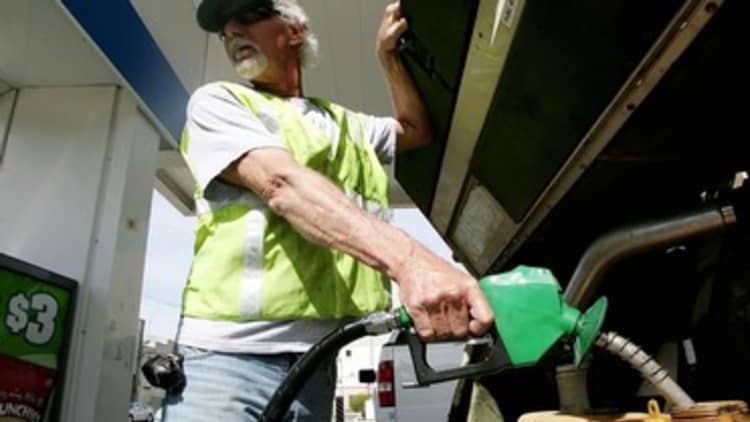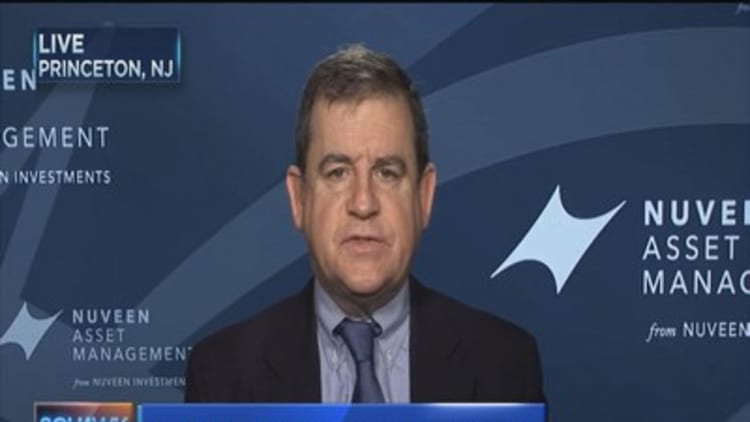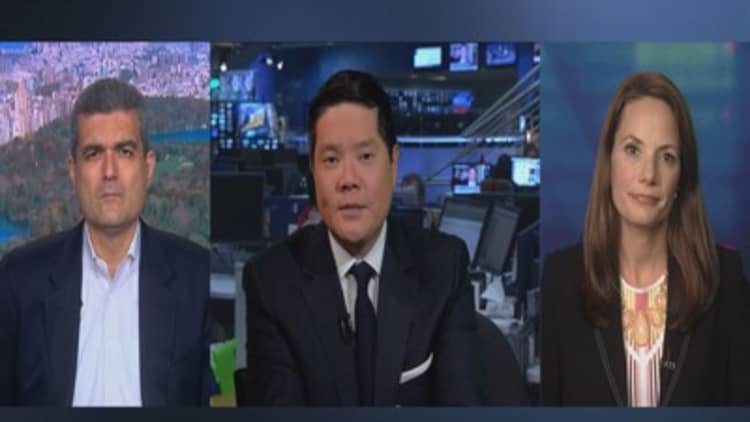



Unless the Fed shocks investors with a hawkish tone, oil conceivably could be a bigger factor for credit markets this week than the Fed's first hike in nine years.
"There is definitely an obsession over oil and what that means for the next trend for both the stock and bond market, and the Fed should not really want to get in the middle of that tussle," said George Goncalves, head of rate strategy at Nomura.
Falling oil prices have hammered stocks and bonds of energy companies, and market fears about its impact on corporate balance sheets got worse when crude plunged below $40 a barrel last week. The most affected corner of the credit market has been high yield or "junk bonds," hit broadly but with energy and materials names slammed even more.
"I think it's going to be pretty hard for high yield to rally until oil gets its legs," said Rick Rieder, BlackRock chief investment officer of fundamental fixed income. He said the bond market has already mostly priced in the Fed's rate hike.
Read MoreGoldman: High yield bond mess to hit these stocks
"It's pretty hard for rates to move dramatically. I think if you drift higher, but there's a shock to any part of the world, it would bring us back to 2 percent. I don't think we're going to see a 3 percent 10-year next year. I think we'll see mid- to high-2s," Rieder said of Treasury yields.
The Fed is widely expected to raise the fed funds rate by a quarter point Wednesday, while emphasizing that it will be slow to hike rates further. The Fed begins meeting Tuesday, and will releases its post meeting statement Wednesday at 2 p.m. ET. Traders will be watching CPI inflation data Tuesday, when it is released at 8:30 a.m. There is also the Empire State survey at 8:30 a.m. ET, and the NAHB homebuilders' survey at 10 a.m. Tuesday.
The recent turbulence in markets has stirred speculation that the Fed could hold off on a rate hike, but strategists say that is unlikely.
Read MoreAre they wrong? Fed set to hike at rough time
"Currently now there is some stress in markets. Equity prices have come down. High yield spreads have widened. It's specific to a specific area … I think the Fed will move," said Jim Caron, fixed-income portfolio manager at Morgan Stanley Investment Management. "(High yield) is going to have knock on effects to everything but I don't think this is a systemic event. If I'm a would be buyer of the market, I'm not going to be a buyer today. I might wait."
According to Bank of America Merrill Lynch, high yield, as of Tuesday, had a negative total return of 4.6 percent year to date compared to a flattish but positive 0.33 percent return for investment grade corporate debt. The high-yield spread was 710 basis points Monday, compared with 171 for investment grade. High yield has widened by 70 basis points since Nov. 30, while investment grade has widened by just 9 basis points.
High-yield spreads have been warning of a recession in 2016, but Caron disagrees with that view. "Maybe what it's telling us is that the metals, mining and energy sector is have a recession," he said. The sell-off in high yield began in commodities-related names but has spread, driving yields higher across the spectrum of junk-rated debt and also investment grade.
Junk bonds continued to sell off Monday after seeing nearly $3 billion in outflows from mutual funds last week. BlackRock said its iShares iBoxx High Yield Corporate Bond ETF HYG saw record volume of $980 billion last week but withdraws of just $560 million.
"Because we've had zero rates for such a long time, it's masked the pain in other asset classes because people expect them to bounce back," said Goncalves. "The problem is if we're seeing the fundamentals for these sectors do worse, and if the Fed raises rates and compounds that issue, that's the problem. We're changing the regime from easy money to a tightening stance when some part of the credit universe is not doing well. It doesn't mean there's a looming crisis on the horizon, but it's something you have to be careful of and not downplay."
Goncalves said for that reason, the markets need to see a dovish statement from the Fed, with the emphasis on a slow path for further hiking. "It has to be that the bar for subsequent hikes has to be higher than for liftoff. If that's the case, all asset classes will do better," he said.
The markets will also be influenced by the Fed's forecast for interest rates. Currently, it expects four rate hikes next year, while Wall Street expects two to three.
Read MoreHow to handle your junk bond exposure
While oil's decline is due to global oversupply, it's also tied to Fed policy. "It's kind of like the tail wagging the dog," said Goncalves. He said energy companies were able to expand drilling and exploration with easy money at low rates, thanks to the Fed. "They created that kind of environment and the commodities market got clobbered because they were talking about rate hikes." The rising dollar, responding to the Fed, has been a negative for commodities.
Oil prices bounced higher for the first time in six sessions Monday, after plunging sharply in overnight trading. West Texas Intermediate crude futures rallied in a strong reversal, rising to $36.31 per barrel, up 69 cents.
"When oil plunged to $34.53 (Monday's low), and bounced, crude futures look like they've set a bottom for this year," said John Kilduff of Again Capital. He expects crude to take another run at its lows in late February when the spring refinery maintenance season gets underway.
"For technical trading reasons, you saw exhaustive selling this morning. capitulation type selling. Volume has been heavy," said Kilduff. "Plus, the commitment of traders report shows record shorts in the market. The boat got tilted too much in one direction."
Kilduff said oil could return to $40 and trade around that level before retesting its lows. If that's the case, it could help the high yield corporate bond market.
Caron also said oil is a big factor, though he does not expect negative returns for high yield in 2016. "Everything depends on oil," he said. "I think if oil stabilizes anywhere above $30, you'll have the stresses that will go through the system. I think you get a potential widening of spreads followed by a compression. It's very conditioned on oil stabilizing."
As for Treasurys, Caron expects underperformance. "With the Fed hiking rates, expectations for inflation move a little higher, I would look for negative performance in Treasurys," he said. Caron said the 10-year could be at 2.75 percent at the end of next year and reach a high of around 2.90 percent in 2016.
Rieder said he expects think the investment grade market to be impacted by mergers and acquisition debt next year, and the investment grade market could potentially see negative returns. But high yield could see a positive return, and beaten down prices could make junk bonds attractive to bargain hunters at some point.


